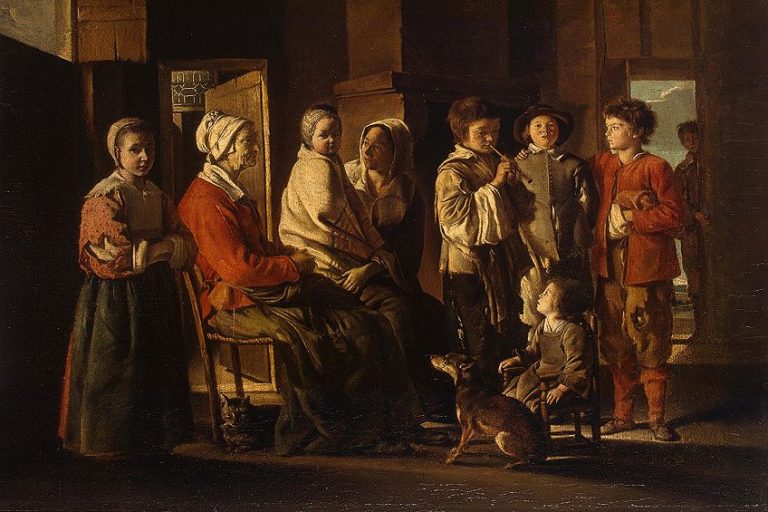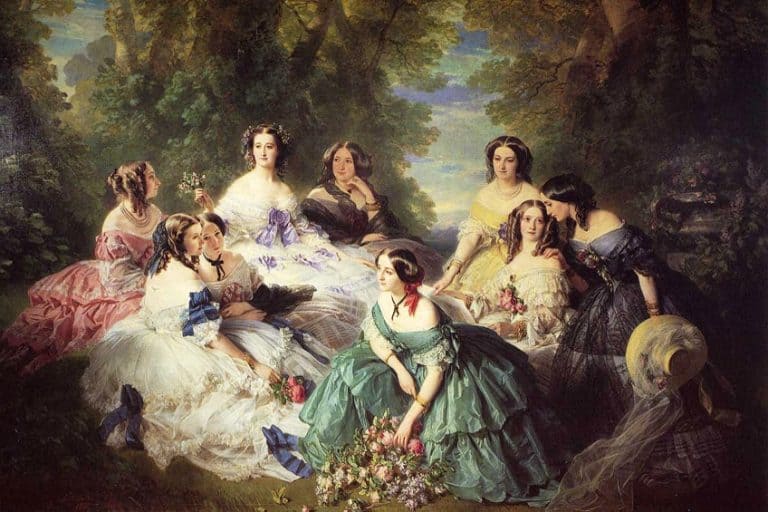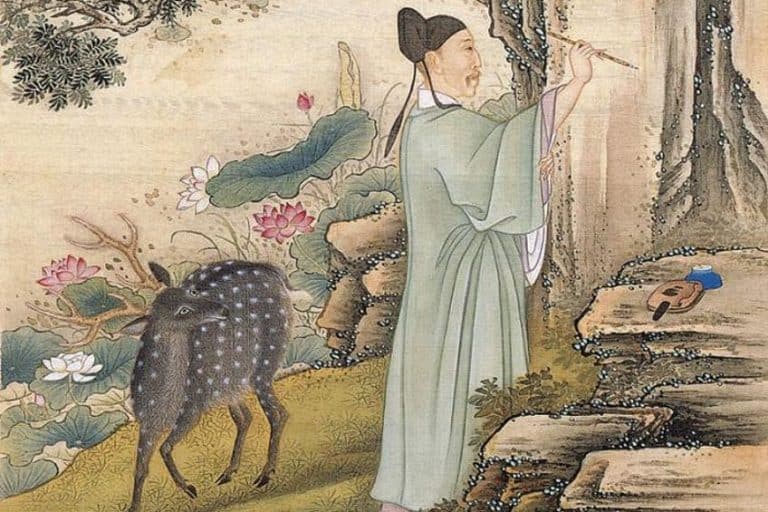Mixed-Media Art – Piecing Together Artistic Visions
In the ever-evolving realm of artistic expression, the question of “What is mixed-media art?” has sparked curiosity and innovation among artists and enthusiasts alike. This versatile form of creative expression has transcended traditional boundaries, embracing a wide array of mediums and techniques to produce captivating mixed-media art examples. From collages and assemblages to mixed-media paintings that seamlessly blend various materials, this genre has redefined the boundaries of artistic composition. In this article, we will delve into the dynamic world of mixed-media art, exploring its rich history, the boundless possibilities it offers, and some inspiring mixed-media art examples that demonstrate its power to push the boundaries of creativity and provoke thought.
What Is Mixed-Media Art?
Art has always been a medium for human expression, a canvas upon which to project our thoughts, emotions, and stories. Among the myriad forms of artistic expression, mixed-media art stands as a versatile and boundary-pushing genre that continuously challenges conventional artistic norms. In this section of the article, we will embark on a captivating journey into the world of mixed-media art, delving into its origins, techniques, and its remarkable ability to weave disparate materials into captivating narratives. From the very definition of mixed-media art to its evolution and the incredible range of possibilities it offers, we will unravel the essence of this artistic alchemy.

Defining Mixed-Media Art: An Artistic Melting Pot
Mixed-media art, at its core, is an artistic approach that combines various materials and techniques to create a singular work of art. It is a genre that knows no boundaries, as artists can incorporate anything from paint and paper to fabric, found objects, photographs, and digital elements into their creations.
The essence of mixed-media lies in the fusion of these diverse materials, creating a multi-dimensional and sensory experience for both the artist and the viewer.
Mixed-Media Art vs. Multi-Media Art: Unraveling the Distinctions
While mixed-media art is indeed a multifaceted form of artistic expression, it’s crucial to differentiate it from another closely related term: “multi-media art.” These two terms are often used interchangeably, but they possess distinct characteristics that set them apart. Here are the characteristics of mixed-media art that set it apart from multi-media art:
- Combines diverse materials: Mixed-media art embraces the use of various materials within a single piece. Artists incorporate traditional materials like paint, paper, and canvas, as well as unconventional elements such as fabric, found objects, and digital media.
- Focus on texture and layering: The texture is a vital element in mixed-media art. Artists often use techniques like layering, collaging, and texturing to build depth and complexity within their compositions.
- Narrative and emotion: Mixed-media art frequently emphasizes storytelling and evoking emotion. The combination of materials allows artists to convey complex narratives, challenge perceptions, and create a sensory experience that engages viewers on multiple levels.
- Varied techniques: Artists employ a wide range of techniques, from collage and assemblage to painting and digital integration. This versatility empowers them to explore their creativity freely.

In essence, while both mixed-media art and multi-media art involve the combination of various elements, mixed-media art primarily revolves around diverse materials within a single composition, emphasizing texture, narrative, and emotion. In contrast, multi-media art extends its boundaries to encompass various art forms, encouraging an interdisciplinary approach with a focus on experimentation, conceptuality, and often interactivity:
- Utilizes different art forms: Multi-media art goes beyond the combination of materials. It involves the incorporation of various art forms, such as painting, sculpture, video, sound, and performance, into a single artwork.
- Interdisciplinary approach: Multi-media art is highly interdisciplinary, breaking down the barriers between different artistic disciplines. It encourages the fusion of visual, auditory, and tactile elements.
- Experimental and conceptual: The focus of multi-media art often leans towards experimentation and conceptuality. Artists in this genre might explore how different art forms interact or challenge traditional artistic norms in unique and innovative ways.
- Interactive and time-based: Multi-media art can be interactive and time-based, engaging viewers in dynamic and evolving experiences. It may incorporate technology, live performances, or elements that change over time.
Both of these artistic genres, in their own right, challenge the conventional norms of art and offer artists unique platforms to explore their creativity and engage viewers in thought-provoking experiences. Whether through the fusion of materials or the integration of multiple art forms, these art forms continue to push the boundaries of human imagination and expression.
A Journey Through History: The Roots of Mixed-Media Art
To appreciate the significance of mixed-media art, it’s essential to embark on a journey through history, tracing its roots and evolution. This artistic form, while experiencing a resurgence in recent decades, has deep historical origins, dating back to ancient civilizations. However, it was in the early 20th century that mixed-media art gained prominence as artists sought to break free from the constraints of traditional art forms. In this exploration, we will uncover the fascinating historical trajectory of mixed-media art and its remarkable journey from the ancient world to the avant-garde movements of the 20th century.

Mixed-Media Art in Ancient Civilizations: Ancestral Inspirations
The concept of mixing various materials and techniques in art is far from a modern invention. Ancient civilizations, including the Egyptians, Greeks, and Romans, employed mixed-media techniques in their artistic creations. They combined paint with materials like clay, precious metals, and gemstones to craft intricate sculptures and frescoes, producing vibrant, multi-dimensional works that celebrated their cultural and religious beliefs.
These early examples of mixed-media art serve as a testament to the enduring human fascination with the interplay of materials and the desire to create captivating, multi-sensory artworks.
The Renaissance and Beyond: Mixed-Media in Historical Context
During the Renaissance, artists like Leonardo da Vinci (1452-1519), known for his renowned artwork Mona Lisa (1503), employed mixed-media techniques to achieve subtle color gradations and lifelike textures in their paintings. They integrated oil glazes, tempera, and varnishes to create rich, layered surfaces, pioneering methods that continue to influence contemporary mixed-media artists. This period also saw the incorporation of gold leaf, metal leaf, and intricate mosaic work in religious and secular art, further highlighting the versatility of mixed-media in various artistic contexts.

The Avant-Garde Explorations: Dada and Surrealism
It was in the 20th century that mixed-media art truly came into its own, thanks to the avant-garde movements of Dadaism and Surrealism. These art movements, driven by a desire to subvert conventional artistic norms and provoke thought, embraced innovative techniques, such as collage and assemblage, that would become central to mixed-media art. The Dadaists, including artists like Marcel Duchamp (1887-1968), used found objects and materials to create irreverent and thought-provoking artworks.
Meanwhile, the Surrealists, led by figures like Salvador Dalí (1904-1989), integrated dreamlike and subconscious elements into their works, often employing collage to juxtapose disparate images and ideas.
Contemporary Mixed-Media: A Resurgence of Creativity
As we progress into the contemporary art scene, mixed-media art has experienced a resurgence, with artists across the globe redefining its boundaries. Today, mixed-media artists are unbound by tradition, incorporating everything from traditional paint and canvas to digital media, photography, and interactive elements. This resurgence has fostered an environment of experimentation, enabling artists to push the limits of their creativity and explore new horizons.

The Tools of the Trade: Techniques in Mixed-Media Art
The allure of mixed-media art lies not only in its capacity to transcend the conventional boundaries of artistic expression but also in the rich tapestry of techniques it offers. From the delicate art of collage to the three-dimensional wizardry of assemblage, mixed-media artists wield an impressive arsenal of methods to craft their visual stories.
In this section, we delve into the captivating techniques commonly employed in mixed-media art, each offering a unique dimension to the artist’s creative palette.
Collage: Crafting Narratives Through Composition
Collage is a cornerstone technique in mixed-media art, offering artists a versatile and dynamic means to weave narratives and evoke emotions. At its essence, collage involves the arrangement of cut or torn pieces of paper, fabric, photographs, or other materials on a surface to create a composition. The magic of collage lies in juxtaposition, as artists layer and arrange disparate elements, each carrying its own history and significance. It is an art form that thrives on the interplay of textures, colors, and shapes, enabling artists to convey complex narratives or emotions. Whether it’s the stark contrast of a black-and-white photograph against a vibrant backdrop or the fusion of historical documents with contemporary imagery, collage serves as a powerful tool for expression in the world of mixed-media art.
Assemblage: Sculpting Realities in Three Dimensions
While collage explores the two-dimensional realm of composition, assemblage catapults mixed-media art into the third dimension. In the hands of skilled artists, assemblage transforms ordinary objects and materials into extraordinary sculptures and installations. Found objects, discarded treasures, and various materials converge to create thought-provoking and visually captivating works. Artists engage in a form of artistic bricolage, piecing together items with diverse histories and functions to craft intricate and often enigmatic narratives.
Assemblage transcends traditional sculptural constraints, offering artists the freedom to defy gravity, experiment with space, and challenge viewers to perceive the world from an entirely new perspective.
Layering: The Art of Building Depth and Complexity
Layering is a fundamental technique in mixed-media art, serving as the cornerstone for creating depth and complexity within a composition. Artists stack and overlap different materials and media, such as paint, ink, texture paste, and even found objects, to craft multi-dimensional surfaces that engage the viewer’s senses. The technique of layering is a visual and tactile journey, inviting the eye to explore various strata and inviting touch to experience the textural intricacies of the artwork. Through layering, artists can communicate intricate stories, emotions, and ideas, all while immersing the viewer in a multi-sensory experience.

Texturing: Engaging the Senses Through Tactile Depth
Texturing is a technique that takes mixed-media art beyond the realm of the visual, engaging the tactile senses of the viewer. Artists employ various materials, such as sand, gels, fabric, or even found objects, to introduce tactile depth and intricacy into their works. The interplay of different textures can convey not only the physical qualities of the materials but also emotional and conceptual depth.
By adding a tactile dimension, artists invite viewers to not only see and appreciate their creations but to touch and feel the artwork, forging a deeper connection between the art and its audience.
Digital Integration: The Marriage of Old and New
In our rapidly advancing digital age, the world of mixed-media art has undergone a fascinating transformation, welcoming a harmonious marriage of old and new techniques. This evolution is most prominently embodied in the realm of digital integration. Artists have ingeniously bridged the gap between the analog and digital worlds, unifying photography, graphic design, and computer-generated imagery with traditional artistic materials and practices. This dynamic fusion fosters a visual dialogue that challenges temporal and spatial boundaries.
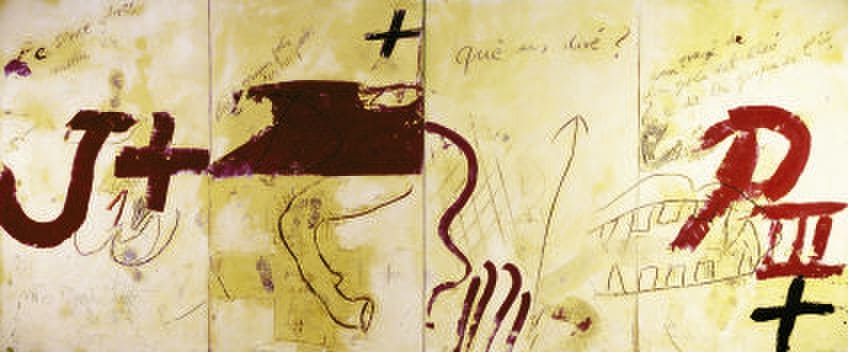
In this realm, artists navigate the intricate intersection between past and present, seamlessly weaving the rich history of traditional mixed-media art with the innovative and rapidly changing tools of the digital age. Through this union, they create works of art that resonate profoundly with contemporary audiences while honoring the age-old tradition of mixed-media. The possibilities are indeed endless, as artists harness the boundless potential of technology to convey their visions and narratives in compelling, thought-provoking ways. Digital integration, as an ever-evolving facet of mixed-media art, exemplifies the adaptability and limitless creativity of artists who stand at the confluence of artistic heritage and technological progress.
Endless Possibilities: Mixed-Media Art Examples
One of the most compelling aspects of mixed-media art is its limitless creative potential. Artists are free to combine materials, experiment with techniques, and challenge the boundaries of their imagination. Here are a few inspiring mixed-media art examples that showcase the diversity of this genre.
Mixed-Media Girls (2007 – Present) by Nikki Farquharson
| Artist | Nikki Farquharson (1985 – Present) |
| Title | Mixed-Media Girls |
| Date | 2007 – Present |
| Medium | Collage, photography, and typography |
| Dimensions (cm) | Various |
| Location | Unknown |
Nikki Farquharson, a contemporary artist celebrated for her dynamic approach to art, weaves intricate narratives through her mixed-media creations. One of her captivating series, Mixed-Media Girls, stands as a testament to her ability to explore themes of identity, diversity, and self-expression through the lens of collage, ink, and photography. In this section of the article, we will delve into the artist’s abstract and offer a detailed analysis of Mixed-Media Girls, exploring the intricate tapestry that Farquharson has crafted.
Nikki Farquharson, a London-based artist and designer, has gained recognition for her distinctive style that combines photography, collage, ink, and digital media.
Her works often delve into themes of individuality, multiculturalism, and empowerment, reflecting her own experiences as a British-Jamaican artist. Through Mixed-Media Girls and similar pieces, she encourages viewers to embrace their complexities and celebrate the richness of their identities. Her art is a testament to the power of representation, fostering a sense of belonging and empowerment for those often marginalized in society. Mixed-Media Girls is a vibrant, multi-layered mixed-media series that immediately draws the viewer’s eye. At its heart, the pieces each showcase a series of female figures, each exuding a distinctive character and personality. Farquharson’s skillful use of photography and collage results in lifelike and engaging depictions of her subjects.
The richly detailed backgrounds for each figure draw upon diverse elements, from vivid patterns and bold colors to motifs that reflect a multitude of cultural influences. The juxtaposition of different visual elements creates a sense of depth and complexity, akin to the multifaceted nature of human identity. The photographic realism of the subjects, contrasting with the abstract and symbolic backgrounds, establishes a visual dialogue that invites viewers to explore and celebrate the richness of each individual’s identity.
Mixed-Media Girls is an artwork series that bridges the gap between representation and empowerment.
Farquharson’s mixed-media approach allows her to convey the multiplicity of human experiences, the ever-evolving nature of identity, and the importance of embracing diversity. The female figures in these artworks each reflect a distinct identity, a unique story, and a sense of empowerment. Their individuality is celebrated, and their presence stands as a symbol of the strength and resilience of women from various backgrounds. The fusion of cultural symbols and patterns within the background serves as a metaphor for the complexities of identity.
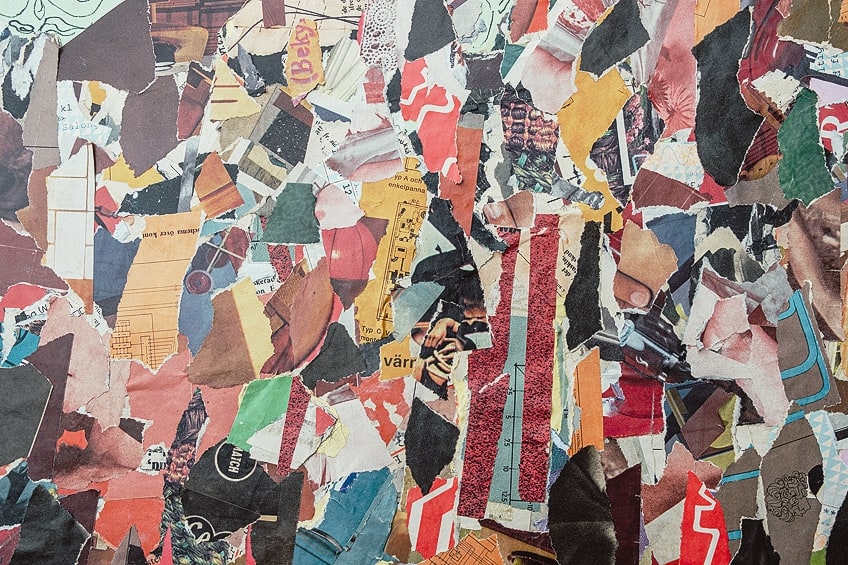
Farquharson masterfully blends these elements, creating a harmonious yet diverse composition that invites viewers to contemplate their own identities and the significance of representation in art and society. Mixed-Media Girls encourages viewers to reflect on their own experiences, identities, and cultural influences. It serves as a reminder of the power of art in fostering inclusivity, celebrating diversity, and offering a visual platform for empowerment.
Untitled (2010) by Njideka Akunyili Crosby
| Artist | Njideka Akunyili Crosby (1983 – Present) |
| Title | Untitled |
| Date | 2010 |
| Medium | Oil, fabric collage, and printed paper collage on canvas |
| Dimensions (cm) | 91.4 x 122.2 |
| Location | Unknown |
Njideka Akunyili Crosby, a name that has become synonymous with innovative and thought-provoking contemporary art, has continually pushed the boundaries of artistic expression. Her remarkable mixed-media painting, Untitled, is a testament to her ability to weave complex narratives and evoke profound emotions through her creations. Here we will provide a detailed analysis of Untitled, delving into both its visual and conceptual layers, and exploring the intricate tapestry Akunyili Crosby has crafted.
Njideka Akunyili Crosby, a Nigerian-born and Los Angeles-based artist, has garnered international acclaim for her evocative and multi-layered works.
Her oeuvre often explores the intersection of cultural, personal, and political narratives, drawing on her experiences as an immigrant and her complex identity. Her distinctive style fuses elements of painting, collage, and printmaking to create visually captivating pieces that speak to the complexities of contemporary life. Through her art, Akunyili Crosby encourages viewers to engage with the intricate stories and emotions that underlie the surface of her works. Untitled by Njideka Akunyili Crosby is a mixed-media painting that immediately captivates the viewer with its intricate composition. The piece is a tapestry of visual elements that draw from the artist’s cultural heritage, personal experiences, and contemporary society. At its heart, the work presents a portrait of a man lying down, offering an intimate and powerful connection with the viewer.
The artist’s skillful use of oil paint creates luminous and highly detailed renderings of the subject. Every brushstroke reflects a deep understanding of light and form, contributing to the lifelike quality of the figure. The palette is a rich blend of earthy tones and vibrant colors, evoking a sense of warmth and vitality. Layered over the painted surface are images and textures that represent the diverse and complex aspects of Akunyili Crosby’s identity. Printed paper cutouts, patterns, fabrics, and symbols are meticulously integrated into the composition. This layering introduces a sense of depth and complexity, inviting viewers to explore the intricate narrative threads that make up the artist’s life and experiences.
Untitled stands as an artistic bridge that connects worlds, cultures, and stories.
Akunyili Crosby’s mixed-media approach allows her to convey the multiplicity of human experiences and the ever-evolving nature of identity. The portrayal of the reclining figure is not merely a static representation but a reflection of the artist’s own identity. The individual’s presence embodies the tension between a cultural heritage, symbolized by patterns from Nigeria, and a contemporary, global existence represented by the Western patterns of the fabrics. The layering of fabrics and textures conveys a sense of memory and the passage of time. The tinted color palette evokes a sense of nostalgia, reminding viewers of the significance of personal history. Meanwhile, the printed paper cutouts and contemporary symbols speak to the constant flux of culture and identity in an interconnected world.
The Power of Mixed-Media Art: Provoking Thought and Emotion
Art, as a medium for human expression, has the remarkable capacity to transcend mere aesthetics and touch the core of human consciousness. Within this vast landscape of artistic forms, mixed-media art emerges as a particularly potent avenue for evoking thought and emotion. Its unique ability to engage multiple senses and storytelling methods positions it as a dynamic genre with the power to challenge perceptions and provoke deep introspection.
Transcending the Visual: Engaging Multiple Senses
Mixed-media art reaches beyond the visual, engaging the viewer’s senses on a profound level. While traditional painting or sculpture predominantly relies on sight, mixed-media art invites touch and often sounds into the experience. Elements like texture paste, found objects, and multi-dimensional assemblages awaken tactile and auditory senses, creating a multisensory journey. The interplay of diverse materials generates a rich tapestry of sensations. Rough, textured surfaces may elicit a visceral response, while juxtaposed elements can incite a symphony of emotions.
This sensory engagement provides artists with an extensive toolbox to convey their narratives, making mixed-media art an art form that transcends the confines of sight and pushes boundaries in the realm of perception.
Narratives Beyond Words: Conveying Complex Stories
Mixed-media art excels at storytelling. Through the fusion of disparate materials, artists weave intricate narratives that challenge viewers to contemplate multifaceted stories and emotions. The combination of photographs, collage, paint, and found objects creates a language where each element carries its own significance, and their contrast conveys a unique story.

Artists can tackle complex themes, from personal experiences and cultural histories to societal issues and universal emotions. They draw viewers into a world where the boundary between artist and audience blurs, facilitating a dialogue that transcends verbal communication. Mixed-media art has the power to stir deep introspection, enabling individuals to connect with the narratives on a personal and emotional level.
In conclusion, the world of mixed-media art offers a captivating journey through artistic innovation and exploration. From its essential question of “what is mixed-media art?” to the vivid and diverse mixed-media art examples, and the intricacies of mixed-media painting, this genre continues to captivate and inspire both artists and viewers alike. With its capacity to engage multiple senses, convey intricate narratives, and challenge conventional norms, mixed-media art remains a dynamic and powerful mode of creative expression. As artists experiment, pushing the boundaries of what is possible and redefining traditional artistic norms, mixed-media art continually evolves, inviting audiences to partake in a sensory experience that challenges perceptions, provokes thought, and fosters a deeper connection between art and its audience.
Frequently Asked Questions
What Is Mixed-Media Art?
Mixed-media art is a versatile artistic approach that combines various materials and techniques to create a singular work of art. This genre transcends traditional boundaries, allowing artists to incorporate a wide range of elements, from paint and paper to fabric, found objects, photographs, and digital components, into their creations. The essence of mixed-media art lies in the fusion of these diverse materials, resulting in multi-dimensional and sensory experiences for both the artist and the viewer. This artistic form encourages experimentation and enables artists to challenge conventional norms, making it a dynamic and ever-evolving mode of creative expression.
What Are the Six Major Types of Mixed-Media Art?
The six major types of mixed-media art encompass a range of creative approaches. These include collage, which involves assembling and layering various materials like paper and fabric; assemblage, where artists create three-dimensional works using found objects and diverse materials; digital integration, which blends traditional and digital media, often incorporating photography and graphic design; transfer, where images are transferred onto surfaces using techniques like image transfer or photo emulsion; painting and drawing, which combine traditional media like acrylics or watercolors with unconventional elements; and sculpture, where artists manipulate materials like clay, wood, or metal to create multi-dimensional artworks. Each type offers artists distinct avenues for experimentation and creative expression.
What Are Some Mixed-Media Art Journal Ideas?
Mixed-media art journaling offers a wide array of creative possibilities. Some inspiring ideas for mixed-media art journal entries include experimenting with various texture techniques, combining watercolors and collages to tell a personal story, using found objects to add depth and symbolism, incorporating image transfers to create unique visual narratives, or exploring the integration of poetry and prose with visual art to evoke emotions and personal reflections. The beauty of mixed-media art journaling lies in its versatility, providing a platform for artists to fuse diverse materials and techniques to express their thoughts, emotions, and experiences in an intimate and visually engaging way.
Nicolene Burger is a South African multi-media artist, working primarily in oil paint and performance art. She received her BA (Visual Arts) from Stellenbosch University in 2017. In 2018, Burger showed in Masan, South Korea as part of the Rhizome Artist Residency. She was selected to take part in the 2019 ICA Live Art Workshop, receiving training from art experts all around the world. In 2019 Burger opened her first solo exhibition of paintings titled, Painted Mantras, at GUS Gallery and facilitated a group collaboration project titled, Take Flight, selected to be part of Infecting the City Live Art Festival. At the moment, Nicolene is completing a practice-based master’s degree in Theatre and Performance at the University of Cape Town.
In 2020, Nicolene created a series of ZOOM performances with Lumkile Mzayiya called, Evoked?. These performances led her to create exclusive performances from her home in 2021 to accommodate the mid-pandemic audience. She also started focusing more on the sustainability of creative practices in the last 3 years and now offers creative coaching sessions to artists of all kinds. By sharing what she has learned from a 10-year practice, Burger hopes to relay more directly the sense of vulnerability with which she makes art and the core belief to her practice: Art is an immensely important and powerful bridge of communication that can offer understanding, healing and connection.
Nicolene writes our blog posts on art history with an emphasis on renowned artists and contemporary art. She also writes in the field of art industry. Her extensive artistic background and her studies in Fine and Studio Arts contribute to her expertise in the field.
Learn more about Nicolene Burger and the Art in Context Team.
Cite this Article
Nicolene, Burger, “Mixed-Media Art – Piecing Together Artistic Visions.” Art in Context. January 11, 2024. URL: https://artincontext.org/mixed-media-art/
Burger, N. (2024, 11 January). Mixed-Media Art – Piecing Together Artistic Visions. Art in Context. https://artincontext.org/mixed-media-art/
Burger, Nicolene. “Mixed-Media Art – Piecing Together Artistic Visions.” Art in Context, January 11, 2024. https://artincontext.org/mixed-media-art/.




